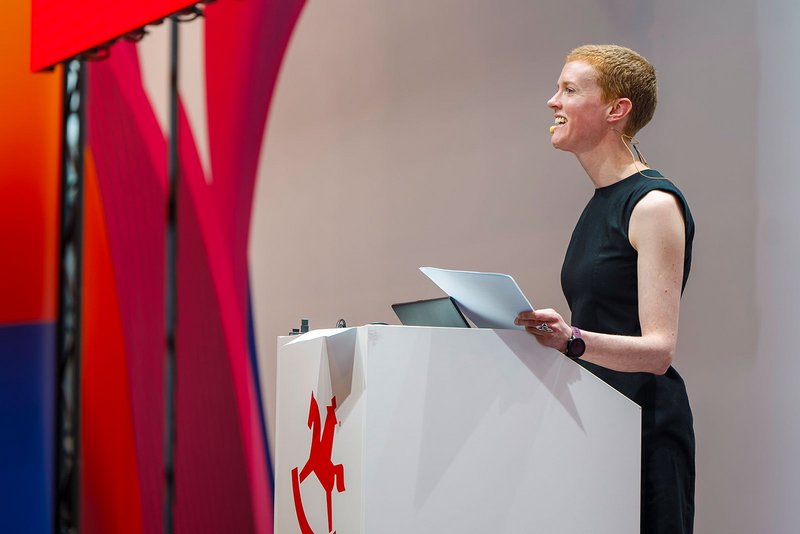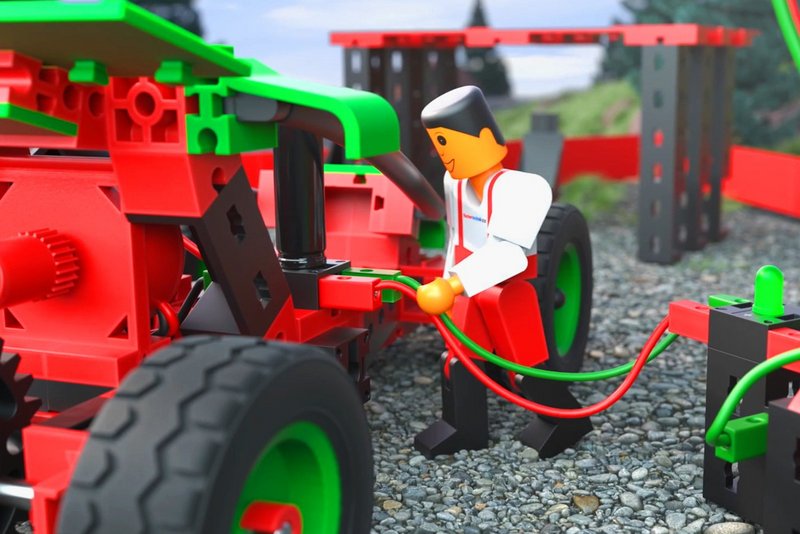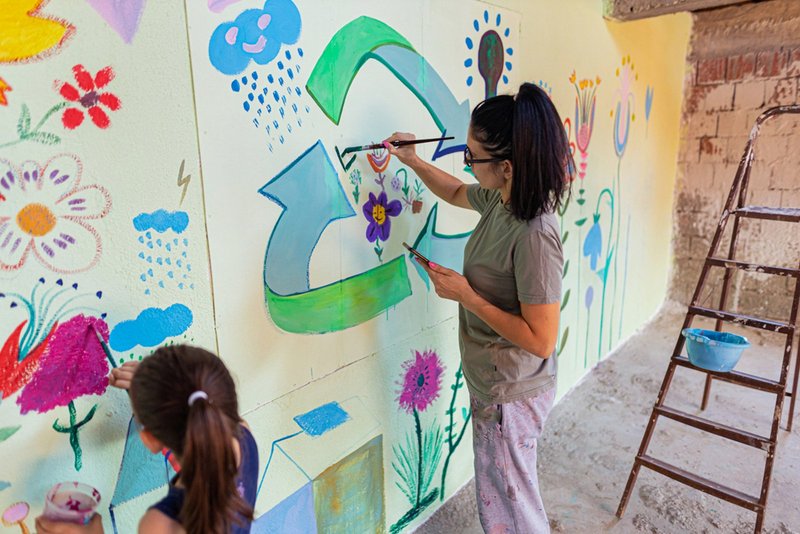
Noted! – a look at notebooks and their eco vitals
Offers for earth-friendly note-taking
By Doreen Brumme
Notebooks have been with us ever since we have been able to draw our thoughts as images and formulate our words as characters. To this day, notebooks preserved from the likes of Leonardo da Vinci, Charles Darwin, Ludwig van Beethoven, Isaac Newton, Pablo Picasso, Marilyn Monroe and others are a testament to their creativity, wealth of ideas, power of observation and the very creative genius of those writing in them.
While a diary is used to author a chronological order of events and feelings that life brings us every day (outside inspiration), and a journal to consciously cultivate our mindset to create new healthy habits and rid ourselves of old unwanted ones (inspiration from within), a notebook offers plenty of space for everything important that we want to remember: It is an extra storage space, sort of an extension of our brain. That means the contents of our notebooks are just as colourful: lists, sketches, invoices, recipes, text – everything you can think of.
Antidote to forgetting: take a note

Forgetfulness is a human trait. Every human being will learn sooner or later about the emptiness it leaves behind. Our worry about forgetting is what makes us fill notebooks to this day – pages and pages of them. After all, a note carries the key to the memories lodged in our brain: experiences and the emotions associated therewith. Without this key, we often would not be able to tap the memories – we would be missing a part of ourselves, of our identity. And so it comes as no surprise that taking notes has great value: as a precaution in order to uphold our individual cognitive ability, and as a support for unlearning unhealthy habits and relearning healthy ones. And would we know of those famous celebrities if it weren’t for their notebooks?
Yet research suggests that journalling a lecture, a presentation and more not only strengthens what is called instant forgetfulness but even may cause it: According to those studies, our brain seems to assume that it need not remember something that we have written down since it has been written down.
Which does not go to say anything against taking notes per se nor even against notebooks as such, but against how we write something down. After all, a note is not just a note: notes that are particularly helpful are those that can be used long term because they have been written down comprehensibly. This includes proven methods like the sentence method, the outlining method, the Cornell method, charting, mind mapping and sketchnoting. But back to notebooks!
Technological progress keeps presenting us with new things, including new notebooks. The interesting thing is that progress somehow fails to wipe out the classics made from paper. And if you take a close look, you will find even original models such as the Roman wax tablet in between analogue and digital notebooks in the latest notebook range.
Notebooks in the 21st century: reusable, hence earth-friendly
There are worlds between a simple bound analogue notebook made from paper and an ultra-modern digital device that features an app for notes (note-taking software) – and many notebooks that vary in type, shape, size, and design. The decisive criteria for all these notebooks are the demands and expectations of those using them. Here, too, diversity is big: from cheaply stapled notebooks to those that are so expensive that you hardly dare write anything mundane into it -- and the stationery industry is offering everything the heart desires in a variety of designs.
Those wishing to combat climate change through sustainable lifestyle choices will choose earth-friendly notebooks. Using the sustainability card as a buying and sales criterion, the remaining selection remains sufficiently large for personal choices.
Earth-friendly notebooks made from paper & Co.
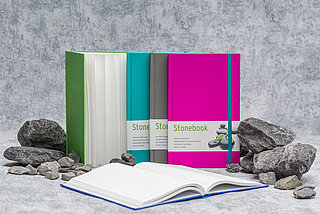
You have notebooks made from eco-friendly processed paper. Yet wood has long ceased to be the only raw material that supplies paper for notebooks. Notebook paper made from fibres that regrow faster than a tree’s fibres like bamboo, grass or hemp are just as easily available than versions made from naturally available stone paper (limestone) like STP Stonebook. There are also notebooks made from recycled paper.
But: The sustainability factor for these paper notebooks is limited to their one-time use only. That is, to the pages to be written on, to be precise. Once the last page has been filled, the notebook’s life is over. A new one is needed!
Tip: At least the cover of such a disposable notebook can be reused for multi-use models with the help of refills. In those cases, when needed, only new earth-friendly notepad refills are bought.
Sustainably noted like in Ancient Rome
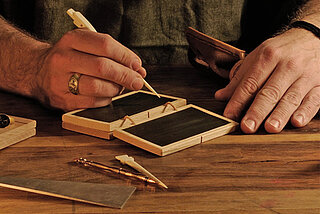
Valuable resources can be saved with reusable notebooks. The ancient Romans already showed us how to do this: They used portable wooden tablets which they filled with wax to note important things on them. The website Der Römer Shop offers those wax tablets Made in Germany including the necessary accessories, as shown in archaeology: as a simple (solid wood tabula filled with real bees’ wax), fold-out (diptych) design made of two, or even as a browsable (triptych) version with three bound tablets.
Chalkboards – sustainable notes as a school favourite
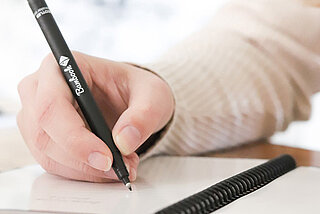
This takes us directly to the next earth-friendly option for taking notes: chalkboards. As an eyecatcher in a classroom, they are systematically being removed from schools ever since everything is being digitalised. But as a memo board, drawing board or aid in learning how to write, they still save us from using paper. Whether as a portable mini board, placed on a stand or hanging on the wall – boards are still a thing, especially in private spaces.
Modern and more practical than wax tablets and chalkboards are notebooks whose content can be erased and rewritten. Several suppliers make them now, for example contriBook and Bambook. The Bambook for example has 20 pages that can be written on on both sides, much like a whiteboard with the right marker. Once the notes are no longer needed, they can be wiped away completely, according to the manufacturer. The re-invented notebook by Modubooq even offers a calendar module (with weekly and monthly overview) plus a module for taking notes and to-do lists.
About the author Doreen Brumme
The freelance journalist on organic issues and #motherof4 Doreen Brumme blogs on doreenbrumme.de about how to enjoy a green lifestyle at work, in school and at home.


